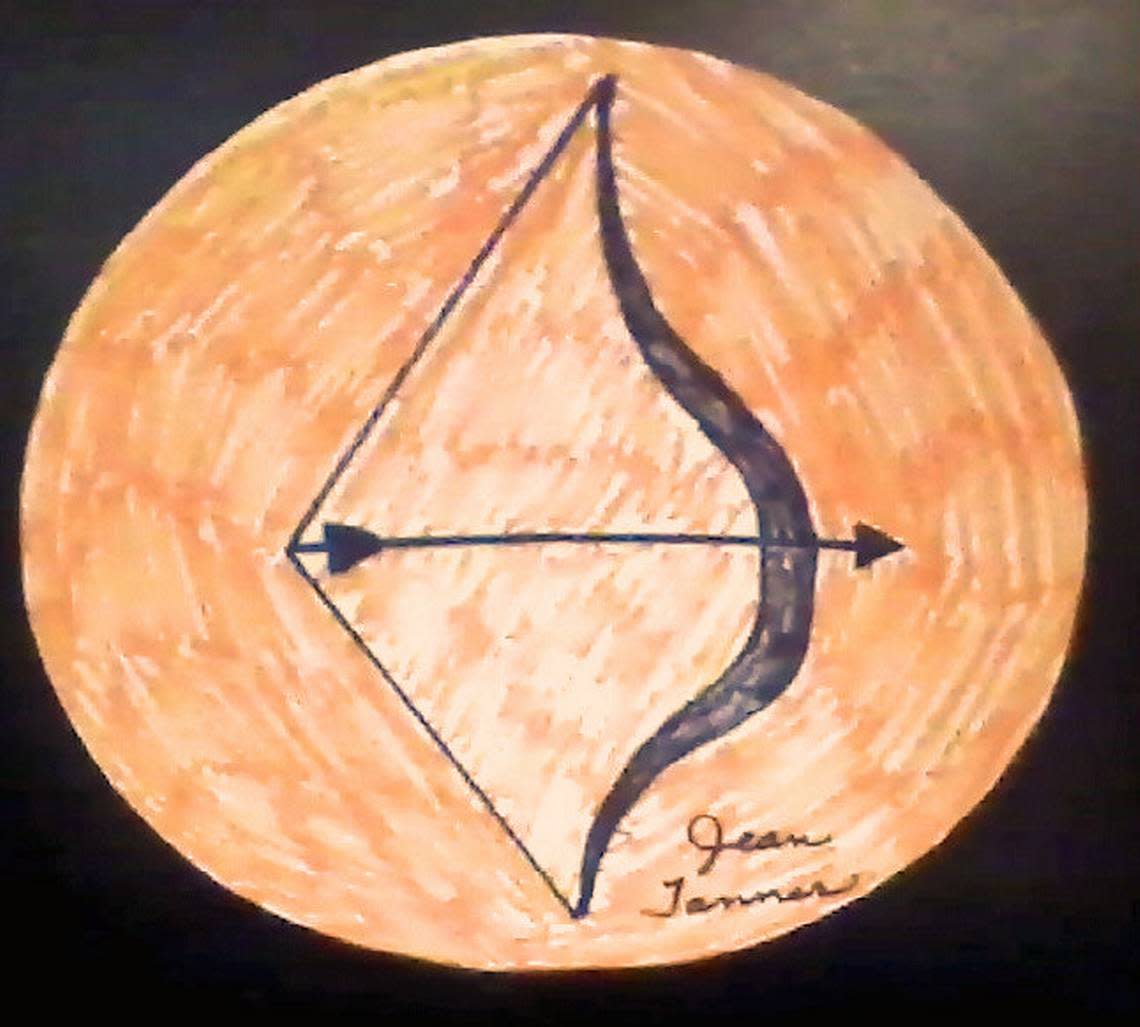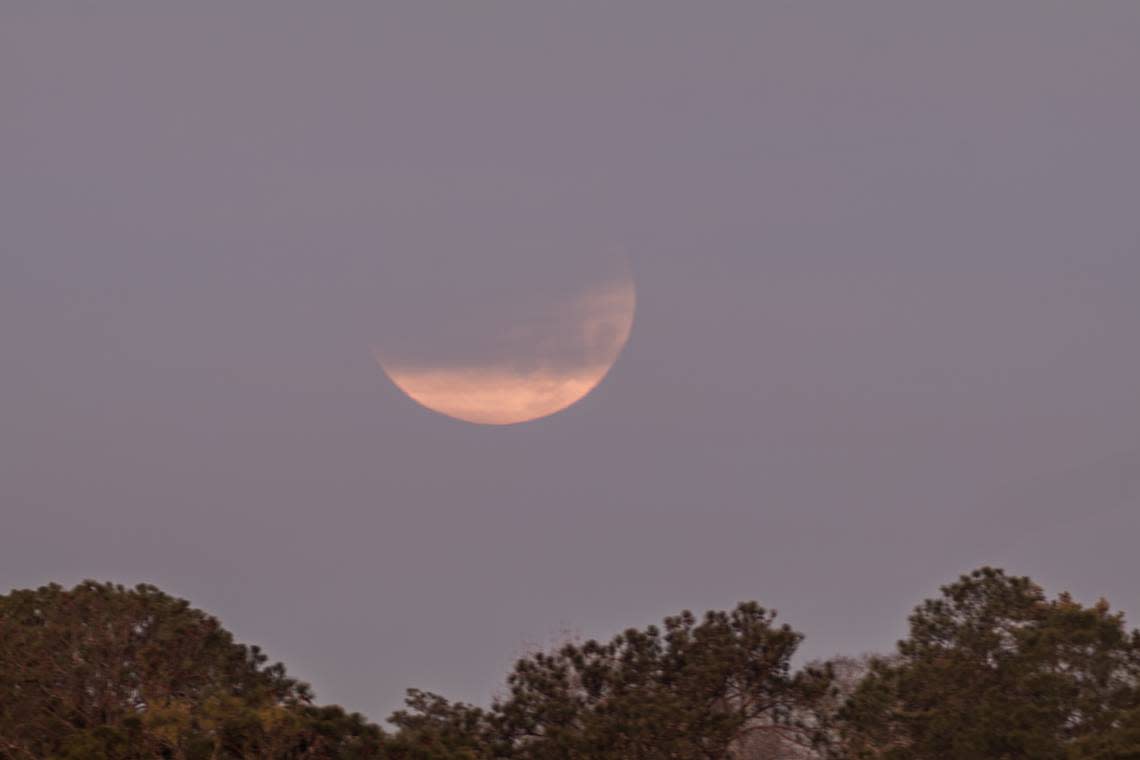A hunter’s moon will appear over SC soon. Here’s when and what that means
Just days away from Halloween, October’s full moon will occur later this week. The hunter’s moon will also be a partial lunar eclipse; although, it will not be fully visible from the United States.
This full moon will be at its peak illumination at 4:24 p.m. on Saturday.
Since Saturday’s full moon will shine at its peak while it is below the horizon, there is no need to worry. October’s full moon will still be visible throughout the night.
Similar to September’s harvest moon, the hunter’s moon will continue to rise around the same time for several nights, giving more light than that of a normal moon.

Why is it called the Hunter’s Moon?
Unlike other full moons throughout the year that are nicknamed to reflect folklore surrounding the designated month, the hunter’s moon and harvest moon are unique and are not restricted to a single month. Instead, they are tied to the astronomical event of the autumnal equinox, detailed The Old Farmer’s Almanac.

As the harvest moon is the full moon that occurs nearest to the autumnal equinox date, meaning it can occur in either September or October. Similarly, the hunter’s moon is the first full moon to follow the harvest moon, which means it can occur in either October or November.
This year, the harvest moon occurred in September and the hunter’s moon will be in October.
What will it look like in South Carolina?
Occasionally, this full moon can turn varying shades of orange, similar to a fall pumpkin decoration or jack-o-lantern. This phenomenon is due to the greater thickness in the atmosphere and the moon’s closer location to the horizon, according to EarthSky.
Its larger than normal appearance boils down to an illusion of the full moon’s physical state, also known as moon illusion.
This occurrence happens shortly after the moon has risen and still lingers along the horizon. The moon’s reddish-orange appearance can also be equated to moon illusion, as it is caused by the greater thickness of the Earth’s atmosphere, detailed EarthSky.
This moon will also have the ability to appear full for a few days in a row.
What is a partial lunar eclipse?
This full moon is projected to become a partial lunar eclipse.
This means that the Earth’s moon will pass into the shadow of the Earth, which will trigger a partial lunar eclipse. It will only be a partial lunar eclipse because the Earth, moon and sun will not perfectly align as they would in a total lunar eclipse.

Unluckily for South Carolina residents, this event will only be fully visible from Europe and other areas across the world as was shown on a detailed map by Time and Date. Those looking to the sky for the full moon on the U.S. East Coast will only get to see this latter penumbral stage of the partial eclipse although the moon will still be below the horizon.
However, the end of the eclipse will be visible from a few states in the country such as New York, Alaska and North Carolina, just not to its full extent, according to Space.com.
How will this impact coastal tides in South Carolina?
This week, those living in coastal regions of South Carolina can expect to experience higher than normal tides as a result of the month’s full moon. Although tides will present as higher, they will not display as much of a contrasting difference as they do during supermoon events when the difference is much greater.
“King tides occur during a perigean (when moon is closest to Earth) spring tide (full and new moon); in other words, a full or new moon must co-occur when the moon is closest to Earth in its elliptical orbit,” detailed the North Carolina King Tides Project.
Tide height comparisons for the month of September in reference to the moon’s phase can be found at Tidetime.org for three coastal South Carolina locations at the following hyperlinks.
2023 Full Moon Schedule
Here is a list of all the full moons set to occur this year and their peak illumination time in the Eastern Time Zone, according to NOAA:
Jan. 6: This full moon happened at 6:08 p.m. It’s called the wolf moon.
Feb. 5: This full moon happened at 1:29 p.m. It’s called the snow moon.
March 7: This full moon happened at 7:40 a.m. It’s called the worm moon.
April 6: This full moon happened at 12:34 a.m. It’s called the pink moon.
May 5: This full moon happened at 1:34 p.m. It’s called the flower moon.
June 3: This full moon happened at 11:42 p.m. It’s called the strawberry moon.
July 3: This full moon happened at 7:39 a.m. It’s called the buck moon.
Aug. 1: This full moon happened at 2:32 p.m. It’s called the sturgeon moon.
Aug. 30: This full moon happened at 9:36 p.m. It’s called the blue moon.
Sept. 29: This moon happened at 5:57 a.m. It’s called the harvest moon.
Oct. 28: This moon will occur at 4:24 p.m. It’s called the hunter’s moon.
Nov. 27: This full moon will occur at 4:16 a.m. It’s called the beaver moon.
Dec. 26: This full moon will occur at 7:33 p.m. It’s called the cold moon.
